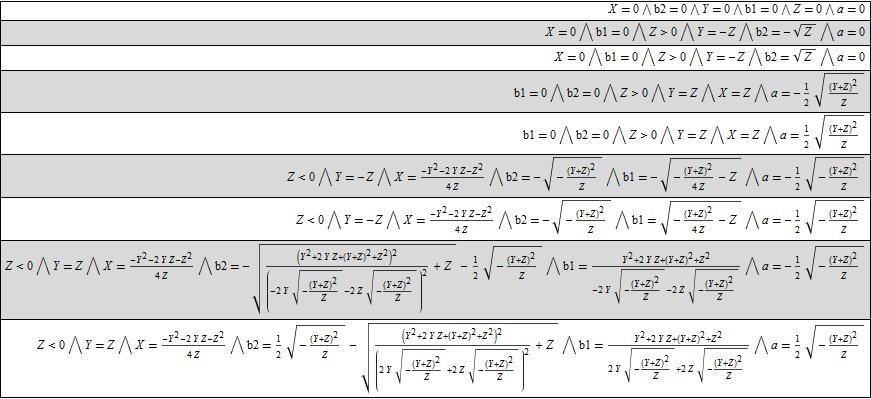The short answer is the value of $x$ determines the values of $a, u, v, y, z$, within a sign.
eqns = {a^2 == x, (a + b)^2 == y, (a + b*I)^2 == z};
cons = {0 < x, {a, x, y, z} ∈ Reals};
Solve[Join[eqns, cons], {a, b, y, z}]

But there is no solution when $x, y,z$ are independent, real parameters.
Solve[Join[eqns, cons], {a, b}] (* { } *)
To see why this happens, look at the equations one at a time. The first equation has two real solutions for $a$, provided $0<x$
sola = Solve[a^2 == x, a, Reals];
Simplify[sola, 0 < x] (* {{a -> -Sqrt[x]}, {a -> Sqrt[x]}} *)
The second equation has two solutions for $b$. Each solution for $b$ is in terms of either of the solutions for $a$.
solb = Solve[(a + b)^2 == y, b] (* {{b -> -a - Sqrt[y]}, {b -> -a + Sqrt[y]}} *)
To determine $u$ and $v$, there are four cases to consider, four combinations of the 2 solutions for $a$ and the 2 solutions for $b$.
Case 1:
case1 = Join[First[solb], First[sola]];
{u1, v1} = Simplify[ReIm[b] /. case1, 0 < x]
(* {Sqrt[x] - Re[Sqrt[y]], -Im[Sqrt[y]]} *)
Note that the value of $z$ has not been used. Let's see if we can find a $z$ that is compatible with $0<x$ and $y\in \text{Reals}$:
z1 = Simplify[(a + b*I)^2 /. case1, 0 < x];
solz = Reduce[{Im[z1] == 0, 0 < x, Im[y] == 0}, y];
Simplify[{
z1 /. ToRules[First[Last[solz]]],
z1 /. ToRules[Last[Last[solz]]]}, 0 < x] (* {-x, x} *)
So, in case 1 we get two possible solutions for $z$ in terms of $x$.
Case 2:
In the second case there is no solution for $z$.
case2 = Join[Last[solb], First[sola]];
{u2, v2} = Simplify[ReIm[b] /. case2, 0 < x];
z2 = Simplify[(a + b*I)^2 //. case2, 0 < x];
solz = Reduce[{Im[z2] == 0, 0 < x, Im[y] == 0}, y] (* False *)
Case 3:
In the third case we get the same two solutions for $z$ as in Case 1.
case3 = Join[Last[solb], Last[sola]];
{u3, v3} = Simplify[ReIm[b] /. case3, 0 < x];
z3 = Simplify[(a + b*I)^2 //. case3, 0 < x];
solz = Reduce[{Im[z3] == 0, 0 < x, Im[y] == 0}, y];
Simplify[{
z3 /. ToRules[First[Last[solz]]],
z3 /. ToRules[Last[Last[solz]]]}, 0 < x] (* {-x, x} *)
Case 4:
In the fourth case there is no solution for $z$.
Conclusion
When we specify $a, x \in \text{Reals}$, there are only certain values of $y$ and $z$ that will give solutions. There is no solution when $x,y,z$ are all considered independent, real parameters.
Solve[Join[eqns, cons], {a, b}] (* {} *)



